Flurries 4
Lithographic Stone
Lithography is the 19th century equivalent of the copy machine, providing at that time faster and cheaper reproductions in longer and more reliable editions. A medley of custom ordered designs were committed to stone and kept in storage in case the customer would reorder a supply of labels, stationary etc.
This stone is from the beginning of the 19th century and has designs on it for liquor labels: porto and Dutch gin. Scribing the letters in reverse by hand demanded practice and expertise. Mistakes were permanent.
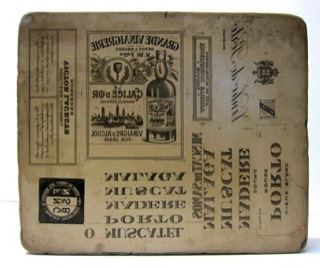
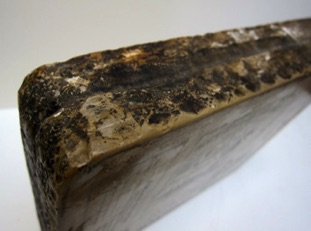
While cumbersome, the stone can be resurfaced for extended use and, unlike copper plate, it would not wear out in the process of printing the edition. This old stone consists of two stones, too thin, laminated together. The scalloped edges are caused by the way limestone fractures in conchoidal patterns.
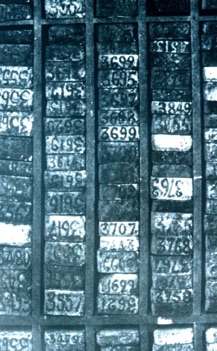
Wall of same-sized litho stones at the workshop of Michel Cassé in Paris.
Photo by Michael Knigge

The largest library of 26634 litho stones, used to print and now archive the earliest maps for the Bavarian land registry. (Landesamt für Vermessung und Geoinformation Bayern.) The amount of limestone removed from the Solenhofen quarries for these maps would have been enough to affect the very map of that area.
Photo: web image
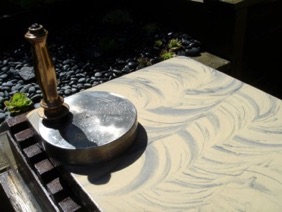
After the edition has been printed, the old image can be grained away with carborundum grit of diminishing size using water and a heavy steel disk with an offset handle, called a levigator.
Graining was done in the 19th century by the apprentices. The process demands utmost precision and attention because just one wayward grain can scar and mar the fine grained surface. The billowing swirls of sludge have inspired my series of "Nightwork." Much of my later work on Formica makes use of the scars made by the levigator.
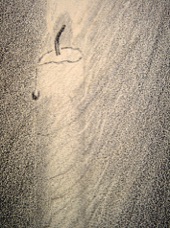
Drawing on stone is unique in that the stone does not give, no matter the pressure you exert. Highlights can be scraped into the lime. The most seductive aspect of a lithograph executed with lithographic pencil is the unique, organic grain of the limestone surfac. It leaves an unmistakable stamp on the entire image, a feeling of permeability that cannot be achieved in an other medium. Close up of a drawing on stone, detail from "Memento Vitae."
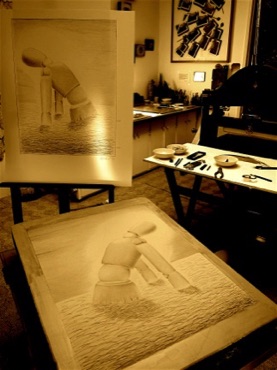
A freshly grained stone is exquisitively sensitive, with the lime ready to absorb and record a fingerprint, a breath of air. The artist must envision and draw the image in reverse since printing will create a mirror image on paper.
While the artist sees the drawing in black and white, the stone can only feel the modulations of the grease. I takes experience to feel like a stone.
Lithograph of Lying Awake. Fifth Night in progress in the studio.